10 DIY FACE MASKS FOR COMBINATION SKIN
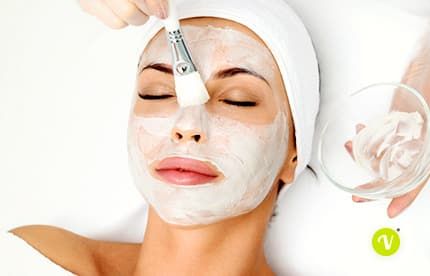
In this article we are going to talk about 10 diy face masks for combination skin. Mixed skin is uneven skin, which has very different areas. Its peculiarity, in fact, is precisely that of simultaneously presenting characteristics similar to both dry and oily skin. It is a very common aesthetic “disorder” among people, for which the world of cosmetics continues to seek appropriate products to improve, as far as possible, the appearance of this type of skin.
This specific type of skin is usually recognized for the shiny area in the forehead, nose and chin – the so-called “Zone T” – while it is dry around the eyes, on the cheeks, in the edges of the face and sometimes even at the corners. of the nose. It can also be defined as mixed skin if the dry part appears in the forehead, while the more oily part falls in the walls of the nose; it is a much rarer case, but it exists.
Previously, we have listed ten DIY face masks for dry skin. Now we will concentrate to diy face masks for combination skin.
If you want to experience the effectiveness of natural ingredients, follow these ten DIY masks for mixed skin: let’s see them together.
TEN DIY FACE MASKS FOR COMBINATION SKIN
- COCOA MASK AND ALOE GEL
- HONEY AND WHITE CLAY MASK
- YOGURT AND HONEY MASK
- STRAWBERRIES AND YOGURT MASK
- PAPAYA MASK
- BEESWAX AND BACH FLOWER MASK
- MASK OF RICE AND LAVENDER FLOUR
- PUMPKIN MASK
- PEAR AND HONEY MASK
- GRAPES AND GREEN TEA MASK
1. MASK WITH COCOA AND ALOE GEL
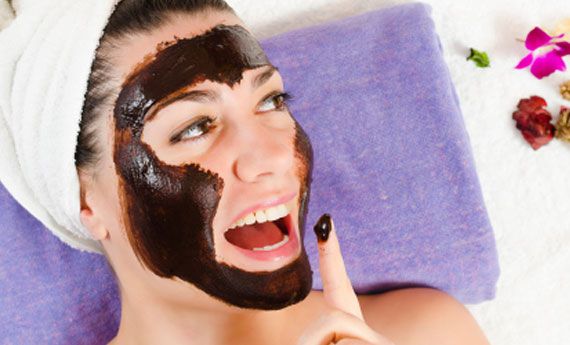
The first do-it-yourself mask for mixed skin is particularly suitable for those periods in which the skin is duller than usual and therefore needs to be “revitalized”. Its peculiarity is to leave the skin of the face very soft, purified and free from imperfections but, at the same time, super hydrated.
Ingredients
Bitter cocoa: 1 tsp
White clay: 1 tsp
Honey: 1 tsp
Aloe vera gel: 1 tbsp
Preparation
Once all the ingredients are mixed well together, apply on the face with a mask brush, or simply with your hands.
The shutter speed generally varies between 25 and 30 minutes. Don’t worry, aloe gel and honey will not bring dryness to the skin, as white clay could do.
After the exposure time, rinse with warm water and continue with the normal skincare routine.
2. HONEY AND WHITE CLAY MASK
Also this DIY mask for mixed skin is unique and will allow you to have a product only valid for the whole face. Ideal for purifying mixed skin without accentuating its dryness, this mask is a real healthy touch.
Apricot kernel oil helps mixed skin to hydrate and is also an ally against aging skin!
Ingredients
Honey
Water (or rose water tonic, which does very well)
White clay: a.n.
Apricot kernel oil (or any other vegetable oil, for example, macadamia)
Geranium essential oil
Rose palm essential oil
Preparation
To begin, slowly pour the water (or the tonic, depending on what you have chosen), into a bowl where the white clay has already been placed.
Then add the vegetable oil, until you obtain a consistency that is neither too thick nor too liquid. At this point, add the essential oils (2/3 drops).
After the preparation, apply the mask on the face and keep it in the post for about 20 minutes.
Once the time has passed, rinse with warm water and you’re done.
3. YOGURT AND HONEY MASK
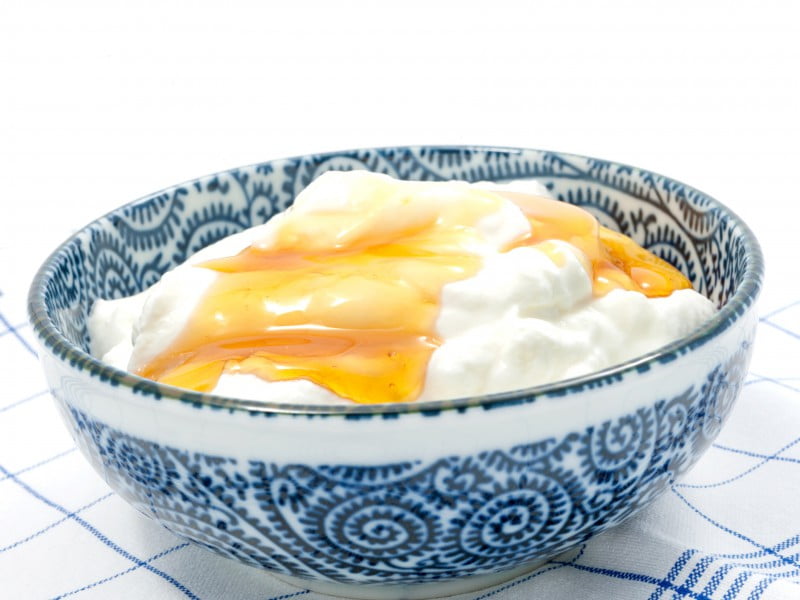
This is probably the simplest DIY mask for mixed skin that exists; similar to the first but even faster, it is perfect for this type of skin as it contains the right ingredients to use – also in this case – on the whole face.
Ingredients
White yogurt: 2 tbsp
Honey: 1 tablespoon
Aloe vera gel: 1 tbsp
Preparation
The preparation is almost trivial: after mixing all three ingredients, you are already done. Of course, before applying it, wash your face well and only then apply it with a brush or simply with your hand.
Be careful to save eye areas as always.
The expected laying is about 15/20 minutes, after which just rinse everything with warm water and proceed with the products you are used to *.
I advise you to do it also two or three times a week, being very light and not very aggressive.
4. STRAWBERRY AND YOGURT MASK
If the previous mask was simple, this is even more so. This is among the simplest do-it-yourself face masks for mixed skin, in fact, it has only two ingredients. Strawberries are important, since in addition to being a natural exfoliant, they help eliminate skin spots and being rich in antioxidants, they regenerate the skin making it shiny and hydrated.
Ingredients
Strawberries: 3 strawberries (rich in vitamin C and particles that exfoliate the skin lightly)
White yogurt: 1 or 2 tsp
Preparation
Just crush the strawberries and add them to the yogurt: done!
The shutter speed is always about 15/20 minutes, followed by rinsing with warm water.
5. PAPAYA MASK
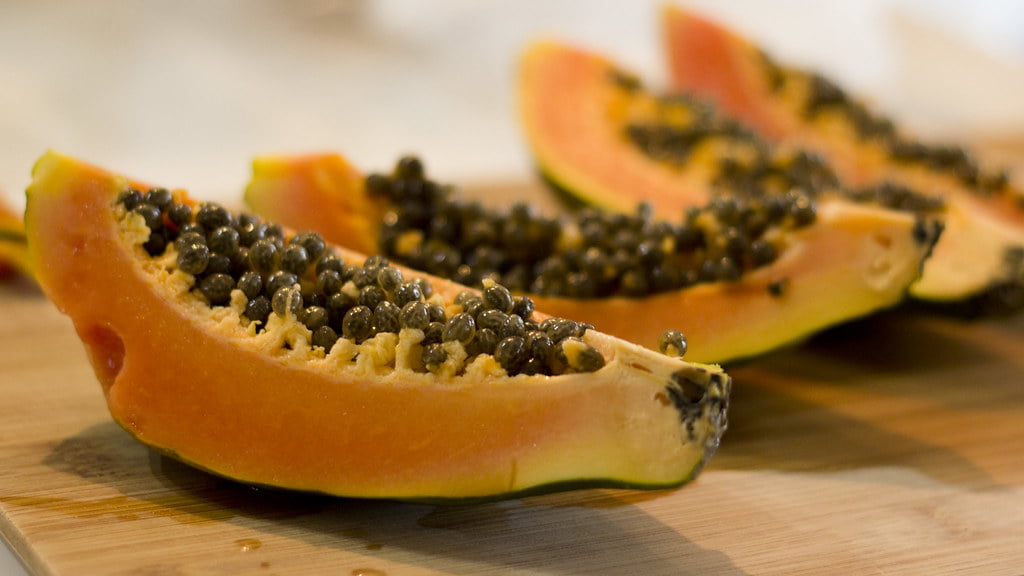
Thanks to the presence of fruit, this is one of the best DIY face masks for combination skin has all the properties suitable for improving this type of skin: it is certainly refreshing, nourishing and normalizing. In particular, the essential oil of neroli stimulates the regeneration of the skin tissue.
Ingredients
A ripe papaya
Wheat germ oil: 2 tsp
Neroli essential oil: 1 drop
Preparation
Mash the pulp of the papaya with a fork, then add it to the wheat germ oil and mix the mixture. Once the suitable consistency is obtained, add a drop of neroli essential oil.
The shutter speed, this time, is slightly shorter: in fact 10 minutes are sufficient, after which it should always be rinsed with warm water.
6. MASK BEESWAX AND BACH FLOWERS
This remedy can be defined as an emulsion rather than a mask. You may have complexities in preparing or finding the ingredients, but in reality they are all very simple to find both in physical stores and online: don’t worry, it will be very simple.
I focus on the powerful effectiveness of the Bach Scleranthus flower which, in this case, is perfectly suitable for those with mixed skin. In fact, it is intended for those who are halfway between two opposite situations. So is mixed skin, which has areas characterized by dryness and others that are more oily.
Ingredients
WHEAT GERM OIL. 60g
Distilled water : 20g
Beeswax for cosmetic use: 4g
Bach flower Scleranthus: 4 drops
Sweet orange essential oil: 1 drop
Grapefruit seed extract: 6 drops
Preparation
First, you have to put the beeswax together with the wheat germ oil in a bain-marie. In the meantime that this mixture dissolves, heat apart the distilled water which must absolutely not boil, but must instead reach 60 ° C.
When you find that both the fat part (and therefore wax and oil), and the water have the same temperature, remove everything from the heat and pour the water in the oil, mixing with a small whisk until a mixture is obtained homogeneous.
Continue to mix and when it is almost cold, add the grapefruit seed extract, the sweet orange essential oil and the bach flower drops.
After about 10 minutes, your cream will have solidified; you just have to transfer it to a dark glass jar.
7. RICE AND LAVENDER FLOUR MASK
Among the do-it-yourself face masks for mixed skin, we have this one that involves the use of ingredients that, combined together, will give new life to your skin. In fact, rice flour has always been known for having absorbing properties of excess sebum, as well as helping to improve skin blemishes.
Lavender flowers are also important: antibacterial, anti-inflammatory, they are able to rebalance the oily part of your skin, as well as reducing its imperfections.
Ingredients
Rice flour: a.n.
Lavender flowers: a.n.
Aloe gel: 2 tbsp
Honey: 1 tbsp
Preparation
First, crush all the lavender flowers in a mortar, together with the rice flour. Once this step is done, dilute everything with aloe gel and honey.
The pose of this mask is about 15 minutes, after which you just have to rinse with the usual warm water. A simple, regenerating mask that can be replicated every two weeks.
8. PUMPKIN MASK
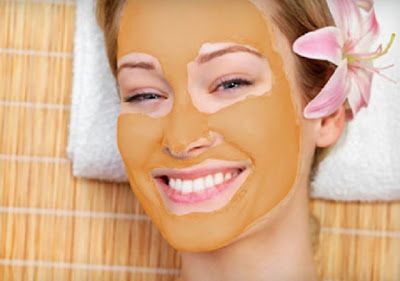
With this mask you will have three guaranteed results: as is well known, in fact, sage has a strong purifying action, while pumpkin keeps the skin of the face well hydrated. The clay, on the other hand, dries up all areas that are too oily.
Ingredients
Pumpkin: a slice
White clay: a.n.
Sage herbal tea: a.n.
Preparation
As you can see, this time too the “recipe” is very simple and also very fast. First, whisk the peeled pumpkin and mix it with the white clay, diluting everything with the sage herbal tea. Note the dose of herbal tea, the mixture must not be too liquid.
Once the exposure time has passed – 10/15 minutes – rinse with the infusion of cold sage: it will act as the perfect tonic for the enlarged pores!
9. PEAR AND HONEY MASK
Pear is a fruit rich in water, but also in fiber, vitamins and potassium. In this DIY face mask for combination skin, it performs an important astringent action – a characteristic that makes it ideal in the presence of skin impurities. Thanks to its properties, the epidermis will appear smooth and compact. Baking soda, on the other hand, is important because it helps restore the pH of the skin in a non-aggressive way.
Ingredients
Half pear
Baking soda: a.n.
Honey: 2 tbsp
Preparation
Also in this case the preparation is very simple and intuitive: crush half a pear and add it to the baking soda and honey. Once the desired compound is obtained, apply it on the face and leave it on for ten minutes.
Rinse after shutter speed.
10. GRAPES AND GREEN TEA MASK
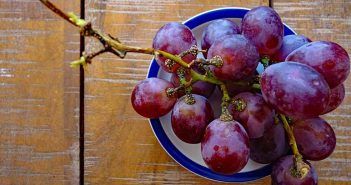
To conclude, I propose this mask with green tea and cold grapes, two very effective ingredients that will help to obtain – at the same time – two important results.
Moisturize, refresh but disinfect reeds: let’s see the ingredients.
Ingredients
Green tea: two sachets
Grapes: 10 grapes
Green clay: a.n.
Preparation
Add the green clay to the green tea and in the meantime blend the cold grapes (just leave them in the refrigerator for about ten minutes).
When the mixture obtained is homogeneous, apply everything directly on the face and leave on for twenty minutes, then rinse.
The grapes are also used in this “Glowing BACCOMASK”. Click here to discover it.
CONCLUSION
These were the ten DIY face mask recipes for mixed skin. Simple, fast, but equally effective!
Do you want to know all diy face masks for dry skin? Click here!
Article written by Marta Mancosu
Translated by Giusy Nardelli




